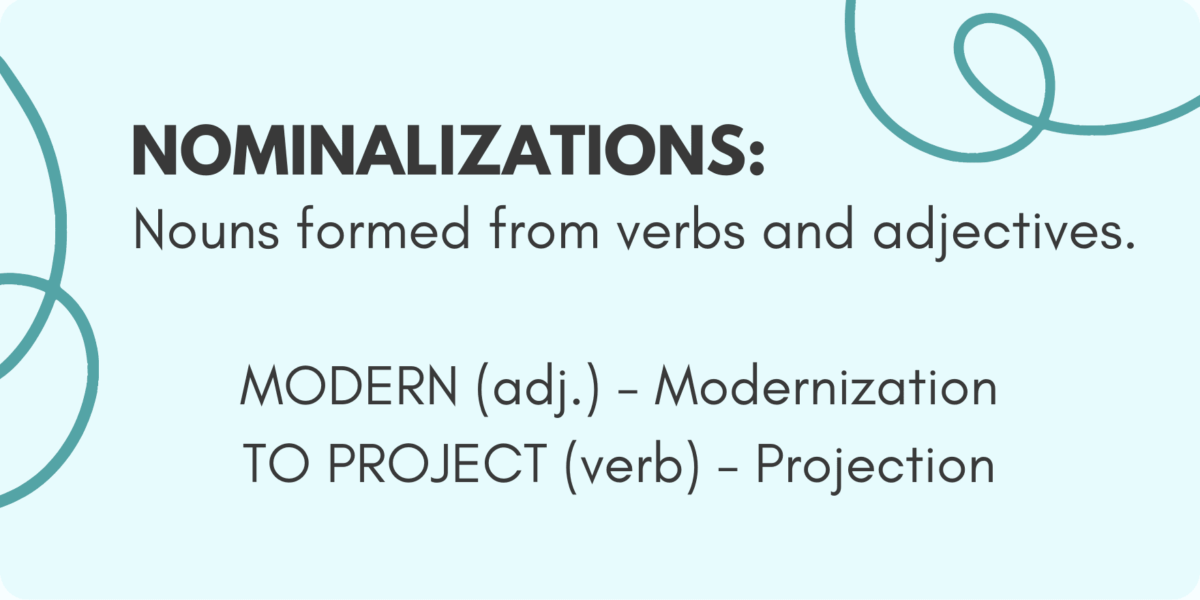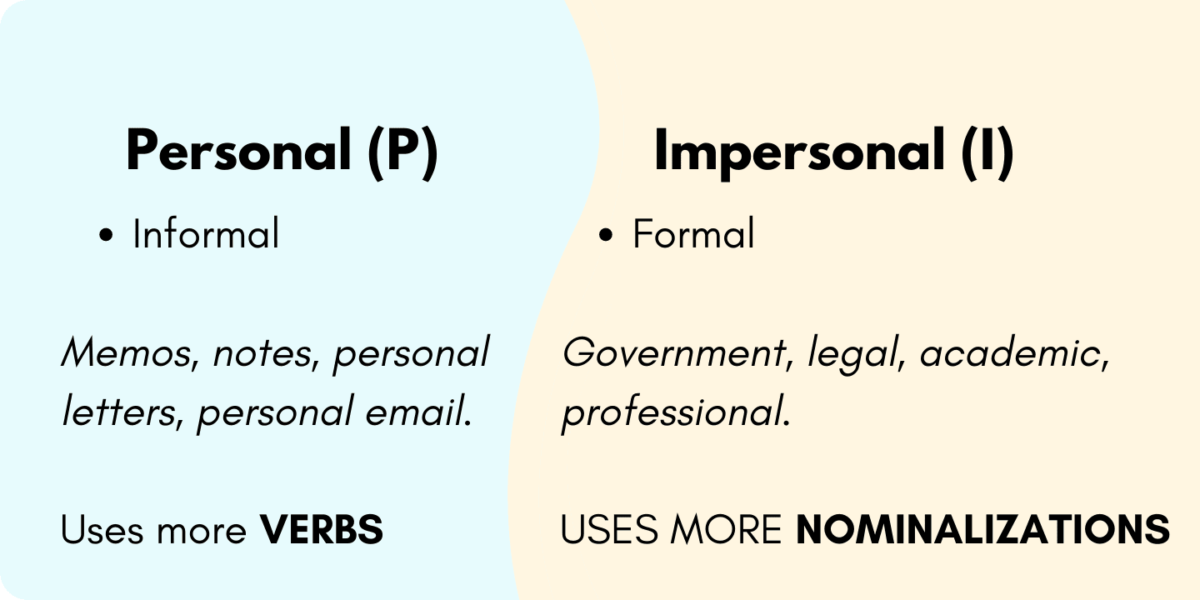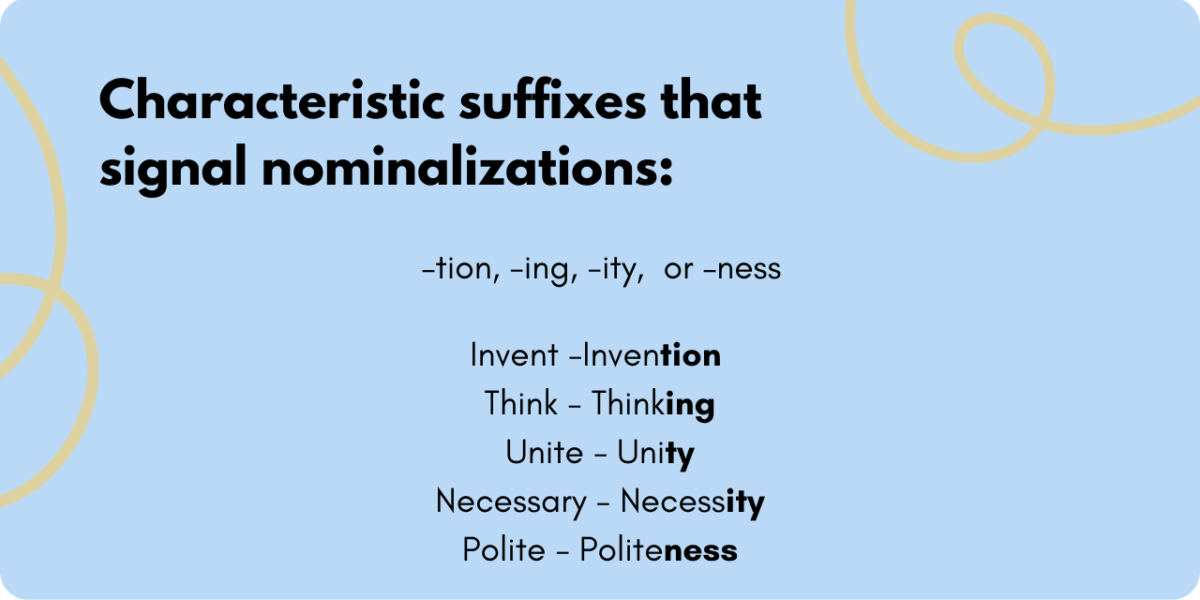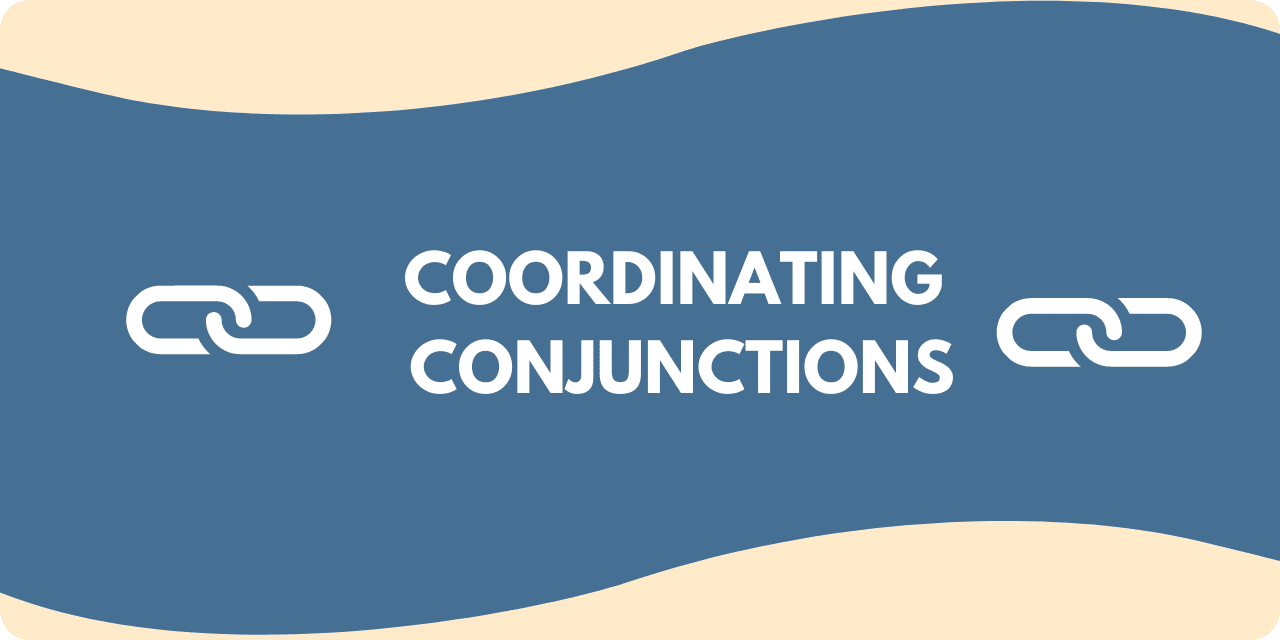In this post we will discuss nominalization, or the process of turning verbs and adjectives into nouns, through the prism of two distinct styles that literate, communicating adults encounter every day.
I refer to the difference between the Impersonal (or I) style and the Personal (or P) style. Both involve a number of variables (contractions, obviously, are Personal; non-use is Impersonal).
It’s a multi-dimensional sociolinguistic difference: a matter of how people speak and write in different settings for different reasons and to project a certain image of themselves.
Nominalization
We’ll be focusing on just one, a key differentiator of the two styles: nominalizations. As stated in our opening, these are nouns formed from verbs and adjectives.

First, definitions of the two styles, in terms of context and function.
The Two Styles: Personal (P) and Impersonal (I)
The Personal style (P Style) is informal. It’s the language of memos, notes, letters, and other communication between people who know each other well and are not writing for a wider audience.
It’s also the language of those forms of communication that seek to create the impression of informality – web/blog/social media posts, advertising copy (which relies heavily on a false familiarity with the audience), and most speeches.
The Impersonal style (I Style) is for those communicating across distant social space. It is the speech of dignified, scholarly, academic, and professional discourse, academic/professional lectured, and of government, bureaucratic, legal, and financial documents.
The I style has more syllables per word and more words per sentence.
Both styles can be taken to extremes – the P style in the hit-and-run barbs, attacks, tweets, texts, and quips on social media…and the I style in dense legal and financial documents and opaque academic writing. One of the causes of the 2008 crash was the creation of financial instruments so complex that one couldn’t tell what they really were.[1]

Nominalizations in Personal and Impersonal Style
The I style is characterized by the liberal use of nominalizations – stolid, steady-state, noun-like expressions which convert processes into single events. By contrast, the P style uses more verbs – words that refer to change, flow, motion, transition, and other alterations over time.
Characteristic suffixes that signal nominalizations include –tion, -ing, -ity, or –ness, e.g., expansions of IRAs, production of automobiles, growth of the business, necessity of invention.

These expressions can almost always be interchanged with Personal, action-expressing verbs that have the same meaning but are more personal in style – because when you use a verb, you typically have to spell out who or what is performing the action.
It’s like the distinction between active and passive: as with the passive voice (e.g., the classic Mistakes were made.), you can conceal who’s performing the action.
My favorite example: in one of my corporate jobs, managers used the expression The thinking is that…. That is, there are just thoughts. Nobody’s thinking them (except senior managers, who are thinking them and whose thoughts must be heeded).
If you’re writing a personal/informal text, you’ll want to edit most or all of the nominalizations into verb-expressions.
Start by supplying the person or entity that’s performing the action. Then rearrange the rest of the sentence to fit. You’ll generally wind up with a little sentence inside your sentence (I’ve put them in curly brackets below).
(1a) I style (abstraction/ nominalization)
The modernization of our facilities is proceeding on schedule.
(1b) P style (action/verb)
[We’re modernizing our facilities} [add: and] proceeding on schedule.
(2a) I style (abstraction/ nominalization)
Current projections show a very constrained outlook.
(2b) P style (action/verb)
{We are/Our staff is currently projecting} a very constrained outlook.
(3a) I style (abstraction/ nominalization)
Management recommended radical cost reductions.
(3b) P style (action/verb)
Management recommended [add: that] we cut our costs radically.
Small individual changes, yes. But they add up. Switching from I to P can unpack your writing (by revealing more information, i.e.. the implied agent) and make it more active-sounding and personal. Of course, if you want to keep it impersonal, make it sound official and important, and conceal the agents of the nominalized verbs, be my guest. It’s your text; you know the tone you want to project, so fine-tune your style accordingly.
[1] In “The Banality of Avarice” (a review of James Stewart’s book Tangled Webs: How False Statements Are Undermining America in Harper’s, 2/12), Jennifer Szalai says that the financial industry, unlike Bernie Madoff, never had to lie, because it was so good at creating complex financial instruments and hiding its duplicities under a fog of words.






